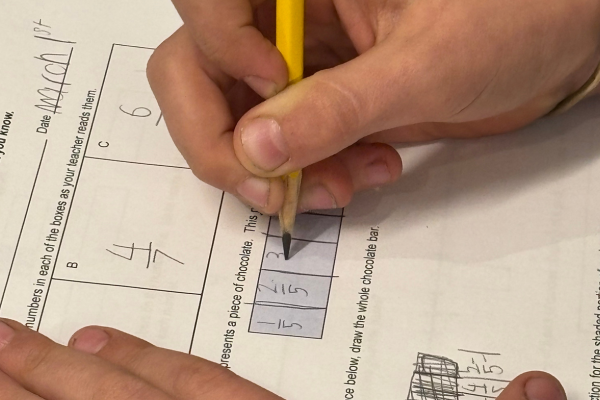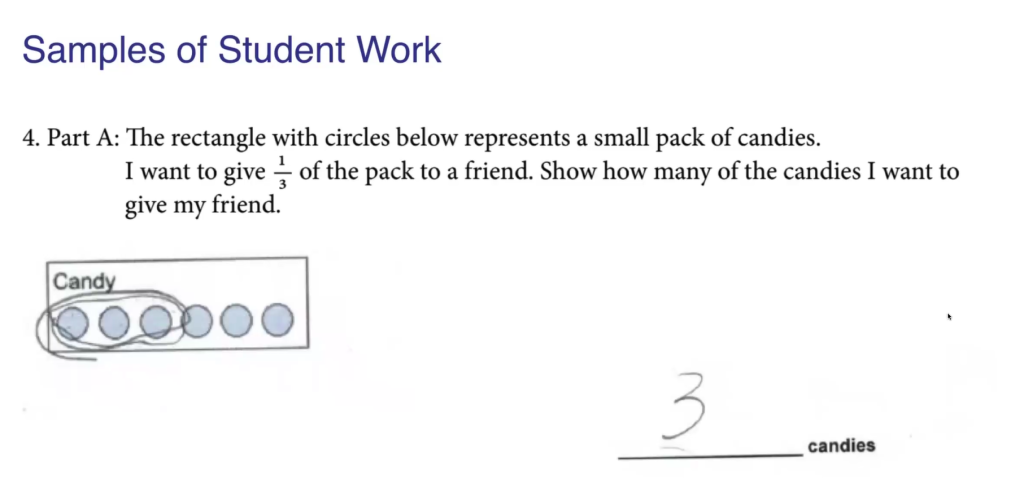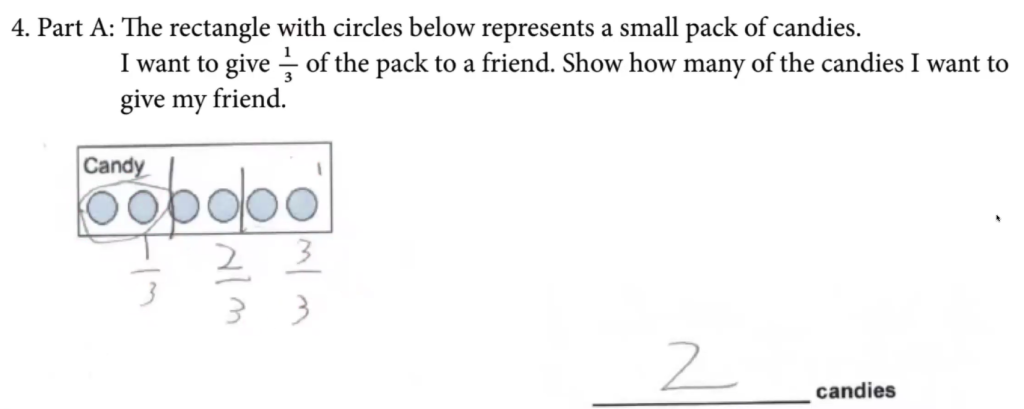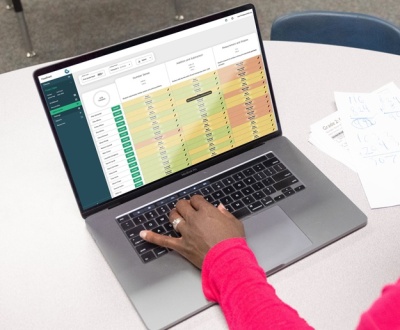
What does it really mean to “do math”? Depending on whom you ask, the answer varies widely. Some students believe math is about following steps, circling answers, and moving on. Others use relationships, understanding, and reasoning to make sense of numbers. As educators, our goal is to support this deeper sense-making. Fractional reasoning is a critical step in that progression, yet fractions are often taught in ways that limit students’ conceptual understanding. This article introduces the foundations of fractional reasoning, the five meanings of rational numbers, and what fractional reasoning looks like in practice.
Rethinking What It Means to “Do Math”
Many students experience math as answer-getting. Traditional assessments typically measure whether students arrived at the correct digits or how quickly they completed a problem. These measures tell us very little about how students think. They do not illuminate student thinking, show how the student made connections, or the underlying concepts that the student drew upon.
High-quality assessment should help us understand how students are making sense of mathematics. Reasoning, not memorization, is the cornerstone of being able to apply math flexibly and confidently.
Mathematical Domains Build on Each Other
Fractional reasoning does not exist in isolation. It fits within a larger hierarchy of mathematical thought. High school concepts like functions and representations grow from proportional reasoning, which is grounded in the multiplicative reasoning students develop from grades 3 to 7.
It is not enough for students to answer basic addition, subtraction, or multiplication questions. They must understand how ideas connect and be able to “uncompress” their thinking when they forget a fact or face a new situation. Fractions live inside proportional reasoning, and students need meaningful tasks that encourage them to reason rather than count.

Note that the above diagram is credited to Pam Harris and MathisFigureOutAble. Learn more.
Five Sources of Meaning for Rational Numbers
Susan Lamon, in Teaching Fractions and Ratios for Understanding, identifies five essential meanings for rational numbers. Students require all five to reason flexibly with fractions.
1. Part-Whole
In the below example, you’ll see that we have shaded 3 out of 4 parts. This meaning is the most commonly taught for fractions and the most limiting. Students often rely on counting rather than reasoning.

2. Measurement
This meaning supports both additive and multiplicative thinking. To model this, take the following examples:
- Seeing 3/4 as 1/4 + 1/4 + 1/4
- Seeing 3/4 as 3(1/4)
- Representing 3/4 on a number line
3. Operator
This meaning reinforces the idea that fractions act on something and require a defined whole. To model this meaning, still working with the same fraction, we’ll look to find 3/4 of a quantity.
4. Quotient
This meaning connects fractions with fair sharing and division. To model it, we can use the example: 3 ÷ 4.
5. Ratio
The last source of meaning is the ratio. To model this, we can take the example of 3/4, interpreting it as a comparison of two quantities.
Each meaning offers students another lens through which to think about fractions. When students understand all five, their reasoning becomes flexible and transferable.
What Is Fractional Reasoning?
Fractional reasoning is the ability to use quantitative understandings of fractions to solve problems, communicate thinking, and justify ideas using words, symbols, visual models, gestures, or measurement tools.
Procedures can be part of this reasoning, but using a procedure without knowing why it works is not fractional reasoning.
What Reasoning Looks Like and Sounds Like
Tasks from the Fractional Reasoning Screeners (FRS) illustrate what it means to reason. (If you are new to the FRS assessments, you can learn more and download the assessment guide.) They are not about answer-getting. Instead, they help teachers understand how students are making sense of and conceptualizing fractions. Take the following example:

When comparing fractions, a student might begin by finding common denominators. However, a student who recognizes that 3/6 is equal to 1/2 can quickly tell that 2/5 is less than 1/2. In contrast, students who rely on the butterfly method are comparing whole numbers rather than the fractions themselves.
When reviewing student work on the FRS, we look for how students think about magnitude, relationships, and size, not just whether they arrived at the correct answer.
How Students Are Performing on the Fractional Reasoning Screeners
The Fractional Reasoning Screeners (FRS) were introduced in early 2025. This fall, data from our Global Cohort has provided insight into how students across the United States are performing. Take the following task:

On this task, as of late November 2025, 71 percent of students could not correctly identify one-third of a set of candies. This task is scored solely on whether students select the correct answer.

Many students show common misconceptions, such as associating the symbol 1/3 with the number 3 instead of reasoning proportionally.

There are also strong examples of fractional reasoning. Students who correctly identify one-third typically demonstrate a clear understanding of equal partitioning and relative size.

Conclusion
Fractional reasoning is essential for the development of higher-level mathematical thinking. It requires more than memorizing procedures or relying on counting strategies. Students need access to the full range of fraction meanings and tasks that challenge them to reason. When instruction and assessment focus on how students think, rather than how quickly they answer, we begin to see deeper understanding take shape.
About us and this blog
Our team and tools help schools implement standards-based grading, streamline assessment systems, and use meaningful data to drive decision-making.
Introduction to Fractional Reasoning
Watch this webinar with David Woodward of Forefront Education and Pam Harris of MathIsFigureOutAble for an engaging introduction to fractional reasoning. Together, they show how teachers can help students think flexibly with fractions and move beyond rules to sense-making strategies that build long-term success. David and Pam highlight why fractional reasoning is essential in upper elementary instruction and share a framework for facilitating rich classroom conversations and problem-solving experiences that strengthen students’ mathematical reasoning.
More from our blog
See all postsForefront is the only assessment data solution optimized for classroom assessment results, leveraging these results to fuel instruction, PLCs, and grading. Elevate meaningful assessment data district-wide to transform how you understand and communicate about student learning across your schools.
Copyright © 2025 Forefront Education, Inc. All Rights Reserved.







